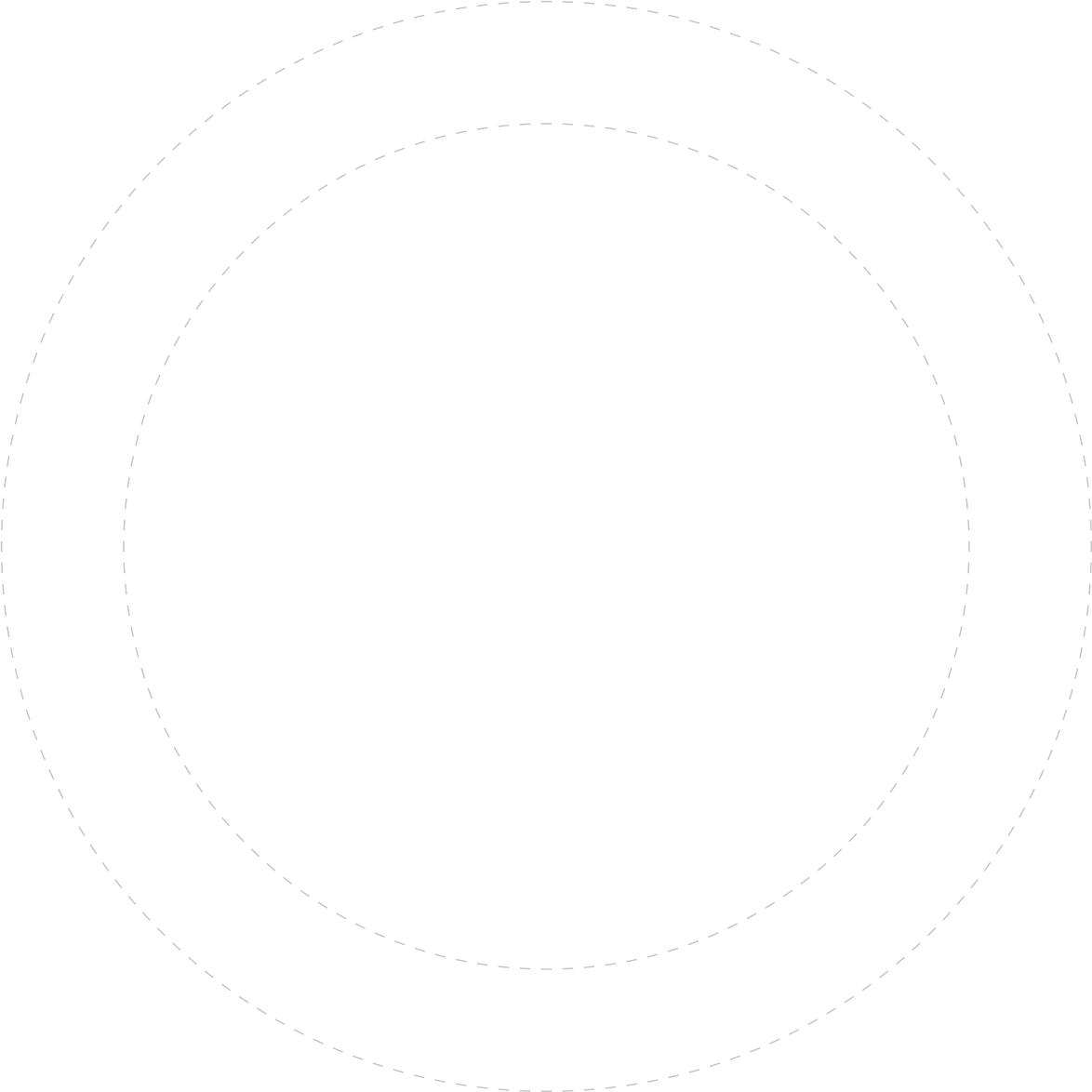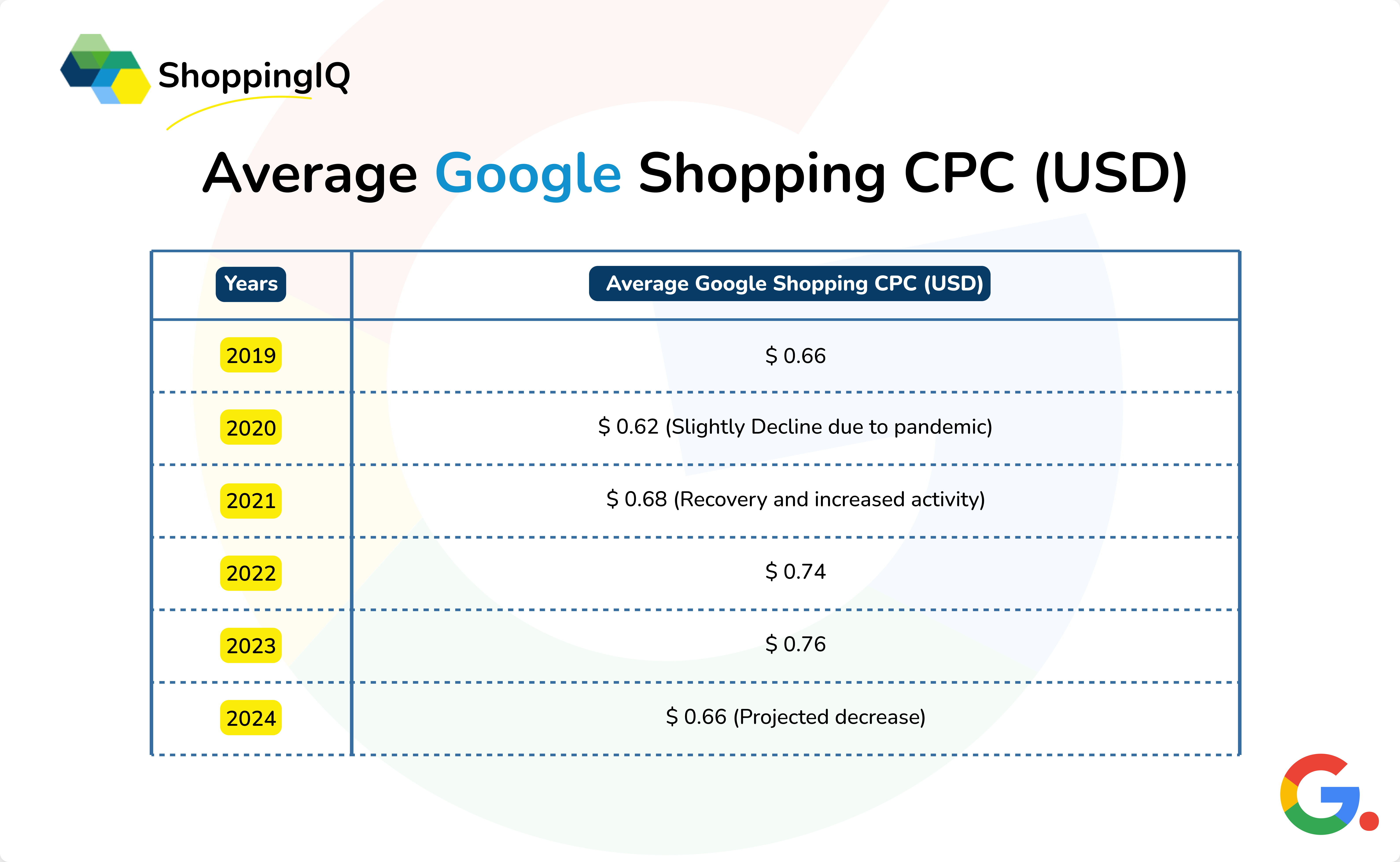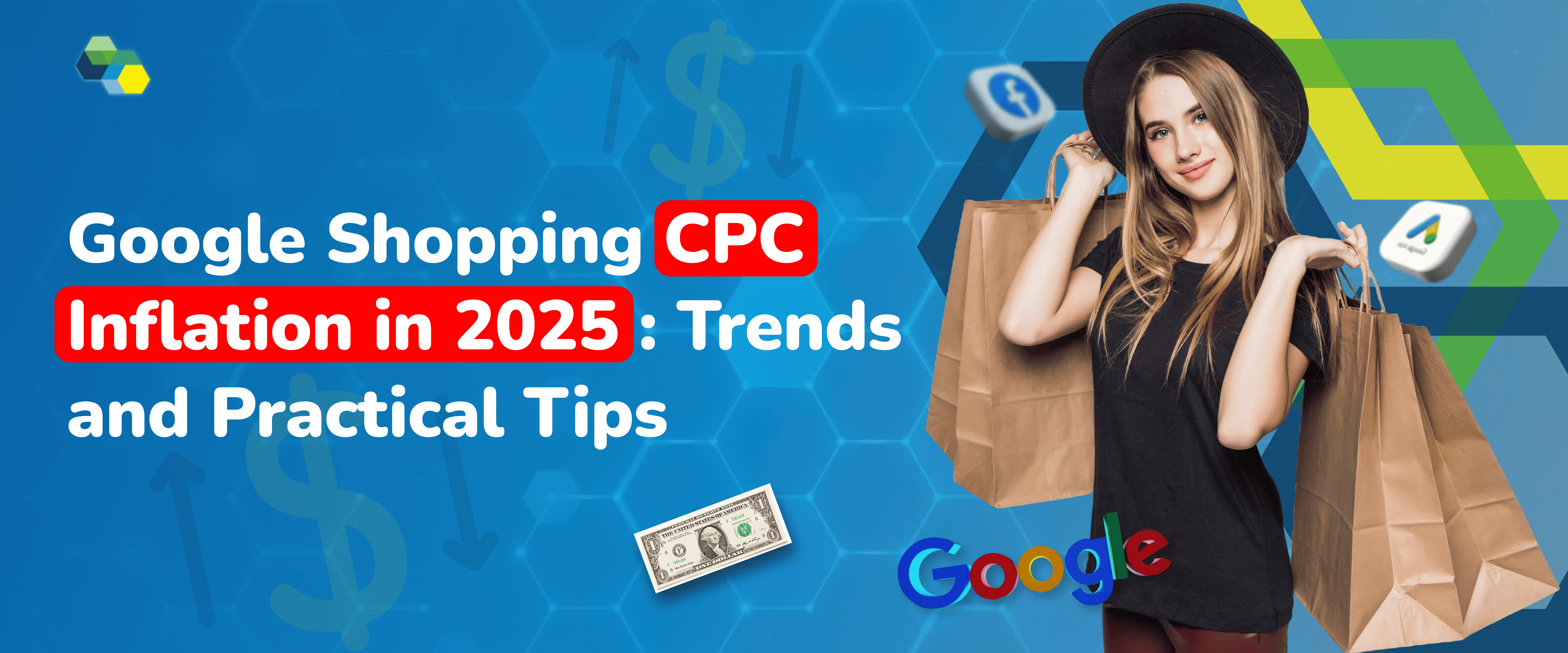
Google Shopping CPC Inflation in 2025: Trends and Practical Tips
As digital advertising continues to increase, businesses leveraging Google Shopping Ads face a critical challenge: managing rising Cost Per Click (CPC) rates. ShoppingIQ explores Google Shopping CPC trends over the past five years, key reasons behind these changes, a prediction for 2025, and actionable strategies to optimise your ad spend.
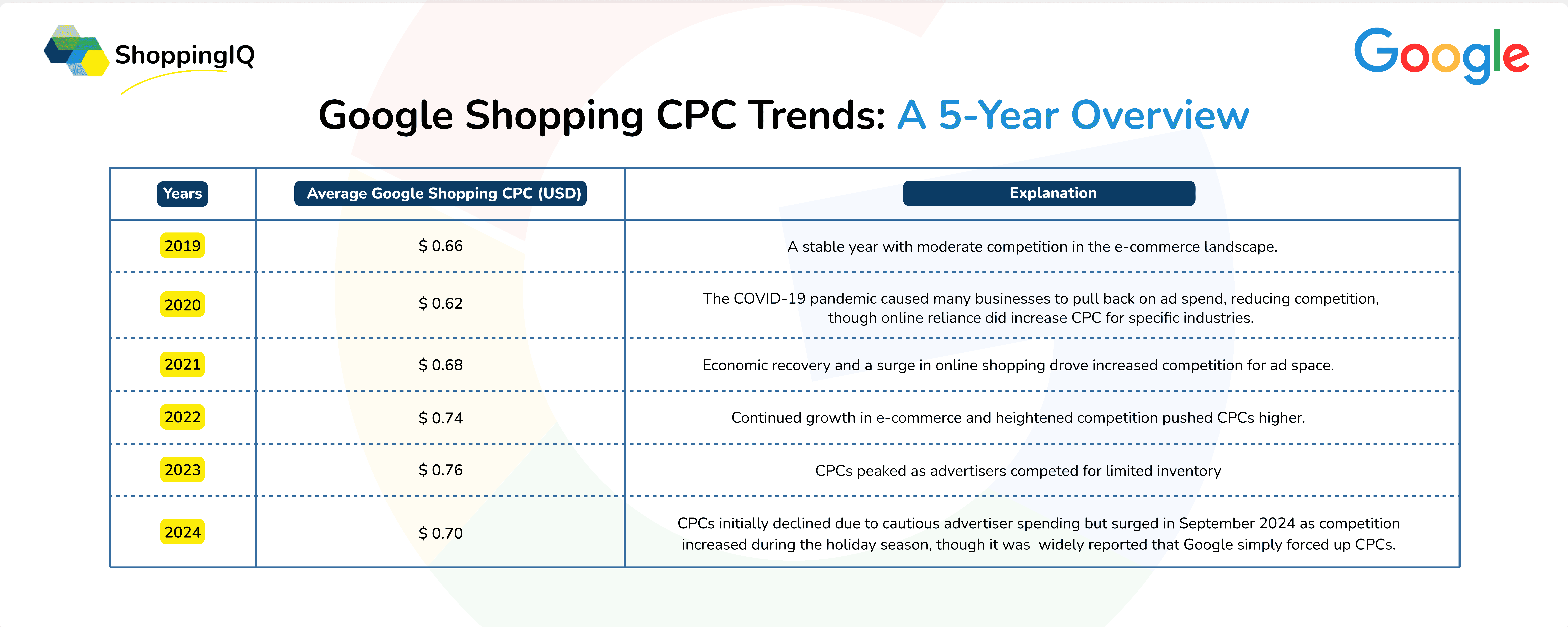


Google Shopping CPC Trends: A 5-Year Overview
| Years | Average Google Shopping CPC (USD) | Average CPC | Explanation |
|---|---|---|---|
| 2019 | $0.66 | A stable year with moderate competition in the e-commerce landscape. | |
| 2020 | $0.62 | The COVID-19 pandemic caused many businesses to pull back on ad spend, reducing competition, though online reliance did increase CPC for specific industries. | |
| 2021 | $0.68 | Economic recovery and a surge in online shopping drove increased competition for ad space. | |
| 2022 | $0.74 | Continued growth in e-commerce and heightened competition pushed CPCs higher. | |
| 2023 | $0.76 | CPCs peaked as advertisers competed for limited inventory. | |
| 2024 | $0.70 | CPCs initially declined due to cautious advertiser spending but surged in September 2024 as competition increased during the holiday season, though it was also widely reported that Google simply forced up CPCs. |


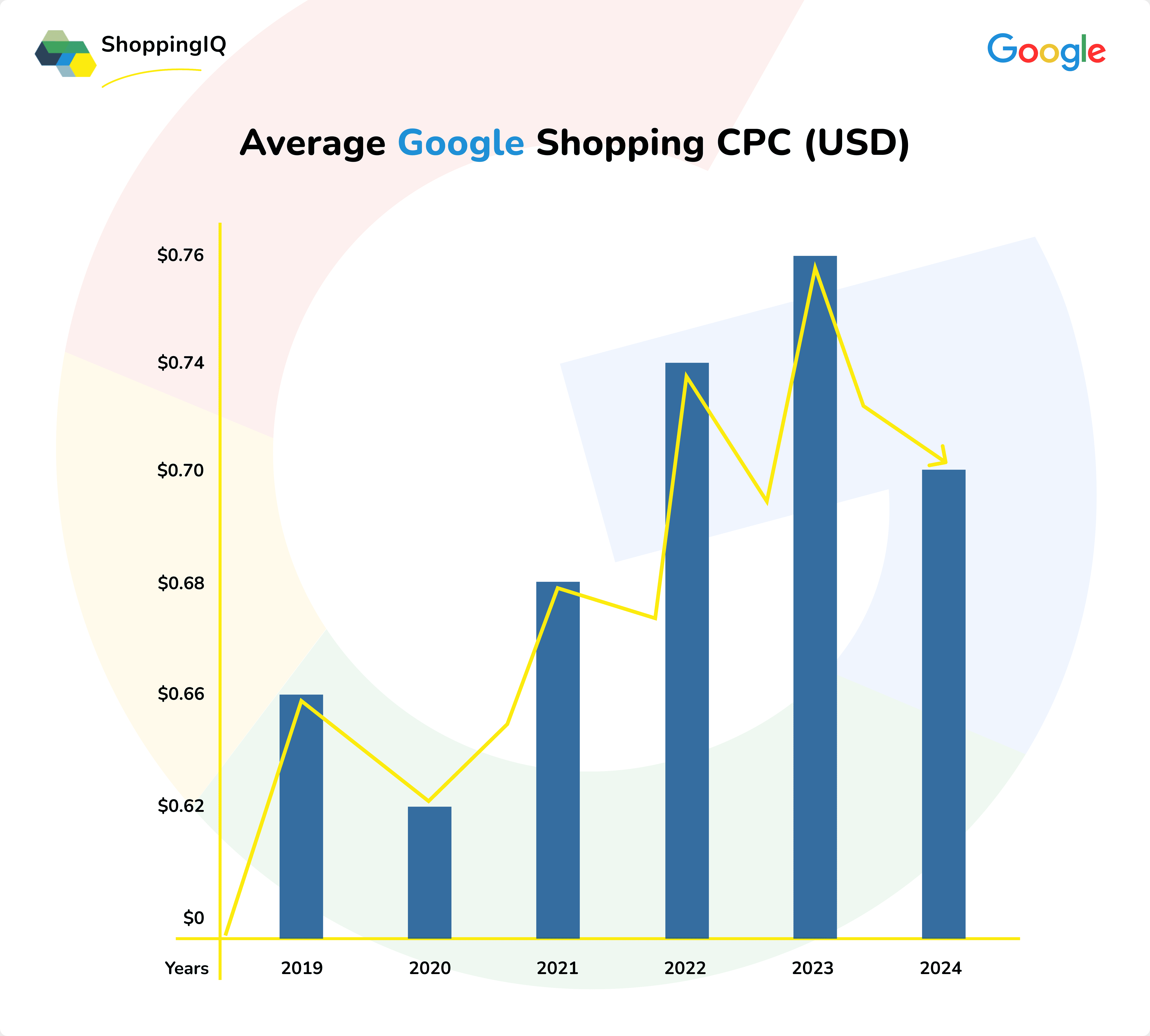
Over the past five years, Google Shopping CPCs have experienced fluctuations influenced by global events, market competition, and technological advancements.
Key Reasons for CPC Changes
1. Economic Factors
- 2019-2020: CPCs decreased during the early stages of the COVID-19 pandemic as businesses reduced ad spend amidst economic uncertainty.
- 2021-2023: A strong recovery led to increased competition, driving CPCs upward.
- 2024-2025: Stabilising inflation and cautious spending habits are projected to ease CPC pressures.
2. Consumer Behaviour Shifts
- The pandemic accelerated online shopping, driving demand for Google Shopping Ads.
- As consumer behaviour normalised post-pandemic, competition for ad space became more industry-specific, impacting CPCs.
3. Advancements in Automation
- Tools like Google’s Performance Max have helped reduced CPC by leveraging lower priced inventory across additional placements, however, the quality of lower priced clicks have been subject to debate.
4. Diversification of Advertising Platforms
- Increased use of alternative platforms like Amazon, TikTok, and Instagram Ads has diluted advertiser focus on Google Shopping, moderating CPC inflation.
CPC Prediction for 2025
While CPCs in 2024 are projected to return to 2019 levels at around $0.66, 2025 is expected to see a slight increase due to:
- Economic Growth: As businesses regain confidence, ad spend will rise, increasing competition.
- Refined Targeting: Advertisers leveraging advanced tools will drive up competition for high-value clicks.
Estimated 2025 CPC: $0.70 - $0.74
Practical Tips to Combat CPC Inflation
1. Optimize Product Feeds
- Ensure product titles, descriptions, and images are clear and optimized for search relevance.
- Use custom labels to segment products and focus on high-performing categories.
2. CPC Optimisation
- Consider ‘Maximise Clicks’ or ‘Manual CPC’ bid strategies to force the CPC down.
- Toughen your Target ROAS (Return on Ad Spend) target to balance cost and performance.
3. Focus on High-Intent Audiences
- Use audience segmentation to target users who are more likely to convert.
- Invest in remarketing campaigns to re-engage high-potential customers.
4. Focus on High Margin Items
- Not all products are equal, high margin products increase business profitability and can be key in overcoming CPC inflation.
- Shift spend to product with higher margin to make your campaigns sustainable.
5. Diversify Advertising Channels
- Explore alternative platforms like Amazon Ads, TikTok, or Meta Ads to reduce reliance on Google Shopping.
- Invest in organic strategies like SEO to complement paid efforts.
6. Real-Time Stock Updates
- This is essential. When products go out of stock, standard Google settings keep these out-of-stock product ads live for a further 24 hours. You end up paying inflated CPCs on products not even available to purchase. This wastes ad budget unnecessarily.
- ShoppingIQ real-time updates ensure no products which go out of stock remain live, avoiding unnecessary charges.
Conclusion
Google Shopping CPCs have evolved significantly over the past five years, influenced by economic shifts, technological advancements, and changing consumer behaviours. While 2025 is expected to bring a modest increase in CPCs, businesses can stay ahead by optimising campaigns, leveraging automation, and diversifying their strategies. By implementing the practical tips outlined above, you can maximise ROI and thrive in an increasingly competitive landscape. Stay tuned for more insights and strategies to keep your digital advertising on track in 2025!

Our Team
Build advanced feeds & campaigns faster

Our Team
Build advanced feeds & campaigns faster



